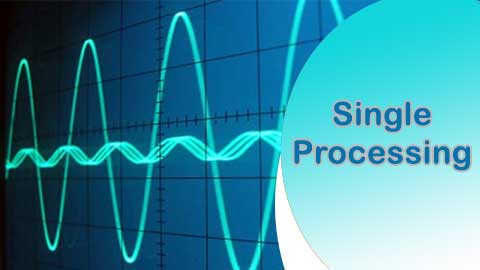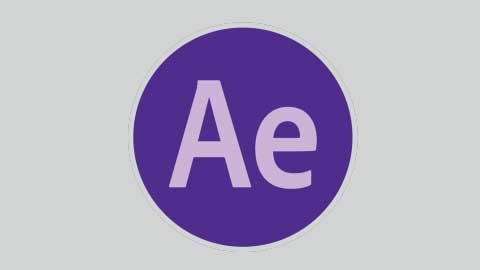What you'll get
- Job Credibility
- Certification Valid for Life
- Live Classes
- Certificate of Completion
Exam details
- Mode of Exam : Online
- Duration : 1 Hour
- Multiple Choice Questions are asked
- No. of Questions are asked : 50
- Passing Marks : 25 (50%)
- There is no negative marking
Digital Image Processing Course covers the core concepts of image processing. The digital Image processing term refers to dealing with images that are available digitally and ready to process, including editing and retouching that image. This is the course that includes all the basic know-how of Digital image processing online course work. In this course, you will learn how to enhance the quality of the image to make it more attractive. Also, you will be explained how to automate for quality control of the image. You will also explore the wide range of digital image processing techniques, algorithms, and many other applications to use.
Why should you enroll in this course?
- You will have an effective understanding of image processing concepts.
- This course will cover information about pixels, camera models, and imaging geometry.
- There are dedicated modules for image enhancement, transformation, restoration, and processing of color images.
- You will learn other essential topics as well, with practical examples.
So, if you enroll in the course, then you will have a fundamental knowledge of image processing with vital mathematical frameworks with dimensional information. This course is specially designed to make students aware of digital image processing to make images more attractive and professional. Moreover, if you are passionate about getting new skills with the latest updates, then this is the course you should get. This will give you vital information about processing images digitally within a given framework. To take this online course, you need to be created a simple registration form and need to buy a course. After completion of the course you shall add image processing skills to your CV and get a chance to work with companies.
Course Content
-
What is an image?
-
Resolution and quantization
-
Image formats
-
Colour spaces
-
Images in Matlab
-
How is an image formed?
-
The mathematics of image formation
-
The engineering of image formation
-
What is a pixel?
-
Operations upon pixels
-
Point-based operations on images
-
Pixel distributions: histograms
-
Why perform enhancement?
-
Pixel neighbourhoods
-
Filter kernels and the mechanics of linear filtering
-
Filtering for noise removal
-
Filtering for edge detection
-
Edge enhancement
-
Frequency space: a friendly introduction
-
Frequency space: the fundamental idea
-
Calculation of the Fourier spectrum
-
Complex Fourier series
-
The 1-D Fourier transform
-
The inverse Fourier transform and reciprocity
-
The 2-D Fourier transform
-
Understanding the Fourier transform: frequency-space filtering
-
Linear systems and Fourier transforms
-
The convolution theorem
-
The optical transfer function
-
Digital Fourier transforms: the discrete fast Fourier transform
-
Sampled data: the discrete Fourier transform
-
The centred discrete Fourier transform
-
Imaging models
-
Nature of the point-spread function and noise
-
Restoration by the inverse Fourier filter
-
The Wiener–Helstrom Filter
-
Origin of the Wiener–Helstrom filter
-
Acceptable solutions to the imaging equation
-
Constrained deconvolution
-
Estimating an unknown point-spread function or optical transfer function
-
Blind deconvolution
-
Iterative deconvolution and the Lucy–Richardson algorithm
-
Matrix formulation of image restoration
-
The standard least-squares solution
-
Constrained least-squares restoration
-
Stochastic input distributions and Bayesian estimators
-
The generalized Gauss–Markov estimator
-
The description of shape
-
Shape-preserving transformations
-
Shape transformation and homogeneous coordinates
-
The general 2-D affine transformation
-
Affine transformation in homogeneous coordinates
-
The Procrustes transformation
-
Procrustes alignment
-
The projective transform
-
Nonlinear transformations
-
Warping: the spatial transformation of an image
-
Overdetermined spatial transformations
-
The piecewise warp
-
The piecewise affine warp
-
Warping: forward and reverse mapping
-
Introduction
-
Binary images: foreground, background and connectedness
-
Structuring elements and neighbourhoods
-
Dilation and erosion
-
Dilation, erosion and structuring elements within Matlab
-
Structuring element decomposition and Matlab
-
Effects and uses of erosion and dilation
-
Morphological opening and closing
-
Boundary extraction
-
Extracting connected components
-
Region filling
-
The hit-or-miss transformation
-
Relaxing constraints in hit-or-miss: ‘don’t care’ pixels
-
Skeletonization
-
Opening by reconstruction
-
Grey-scale erosion and dilation
-
Grey-scale structuring elements: general case
-
Grey-scale erosion and dilation with flat structuring elements
-
Grey-scale opening and closing
-
The top-hat transformation
-
Landmarks and shape vectors
-
Single-parameter shape descriptors
-
Signatures and the radial Fourier expansion
-
Statistical moments as region descriptors
-
Texture features based on statistical measures
-
Principal component analysis
-
Principal component analysis: an illustrative example
-
Theory of principal component analysis: version 1
-
Theory of principal component analysis: version 2
-
Principal axes and principal components
-
Summary of properties of principal component analysis
-
Dimensionality reduction: the purpose of principal component analysis
-
Principal components analysis on an ensemble of digital images
-
Representation of out-of-sample examples using principal
-
component analysis
-
Key example: eigenfaces and the human face
-
Image segmentation
-
Use of image properties and features in segmentation
-
Intensity thresholding
-
Region growing and region splitting
-
Split-and-merge algorithm
-
The challenge of edge detection
-
The Laplacian of Gaussian and difference of Gaussians filters
-
The Canny edge detector
-
Interest operators
-
Watershed segmentation
-
Segmentation functions
-
Image segmentation with Markov random fields
-
The purpose of automated classification
-
Supervised and unsupervised classification
-
Classification: a simple example
-
Design of classification systems
-
Simple classifiers: prototypes and minimum distance criteria
-
Linear discriminant functions
-
Linear discriminant functions in N dimensions
-
Extension of the minimum distance classifier and the Mahalanobis distance
-
Bayesian classification: definitions
-
The Bayes decision rule
-
The multivariate normal density
-
Bayesian classifiers for multivariate normal distributions
-
Ensemble classifiers
-
Unsupervised learning: k-means clustering



